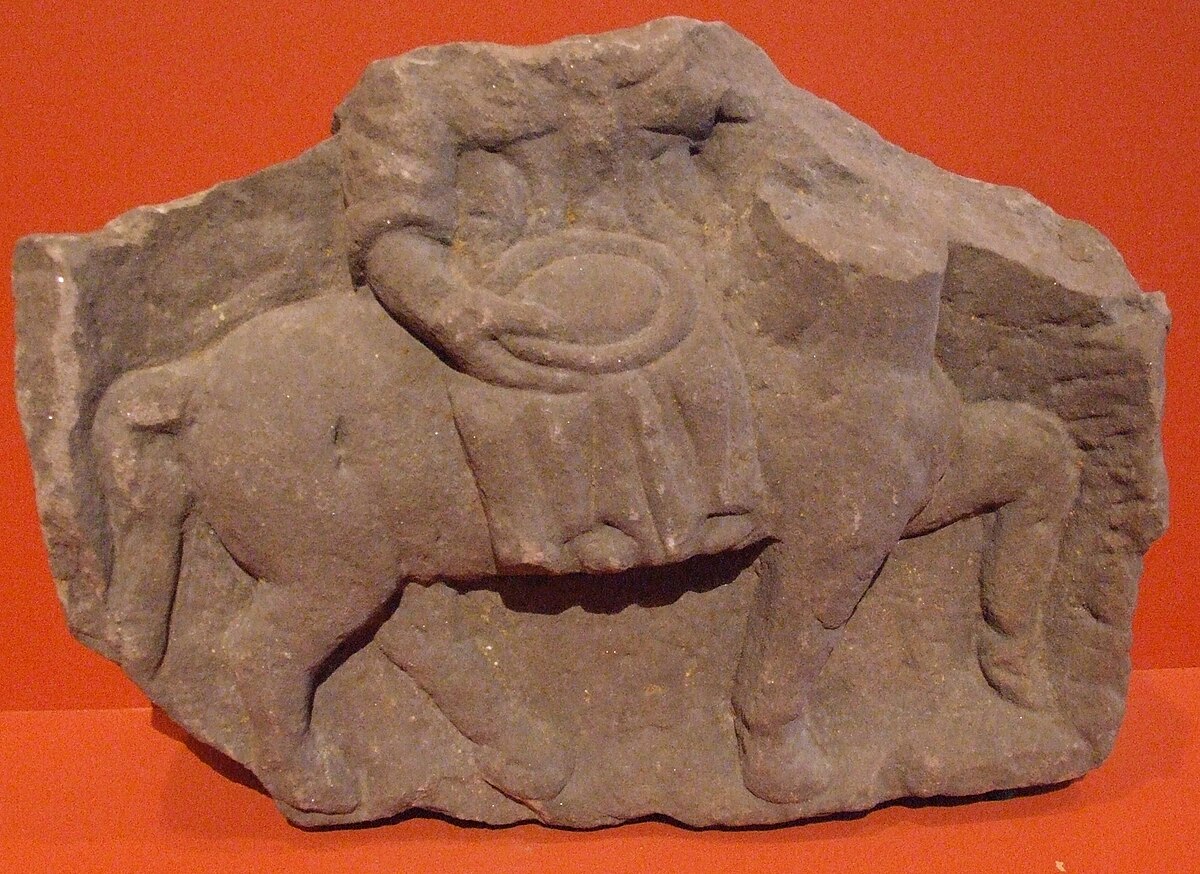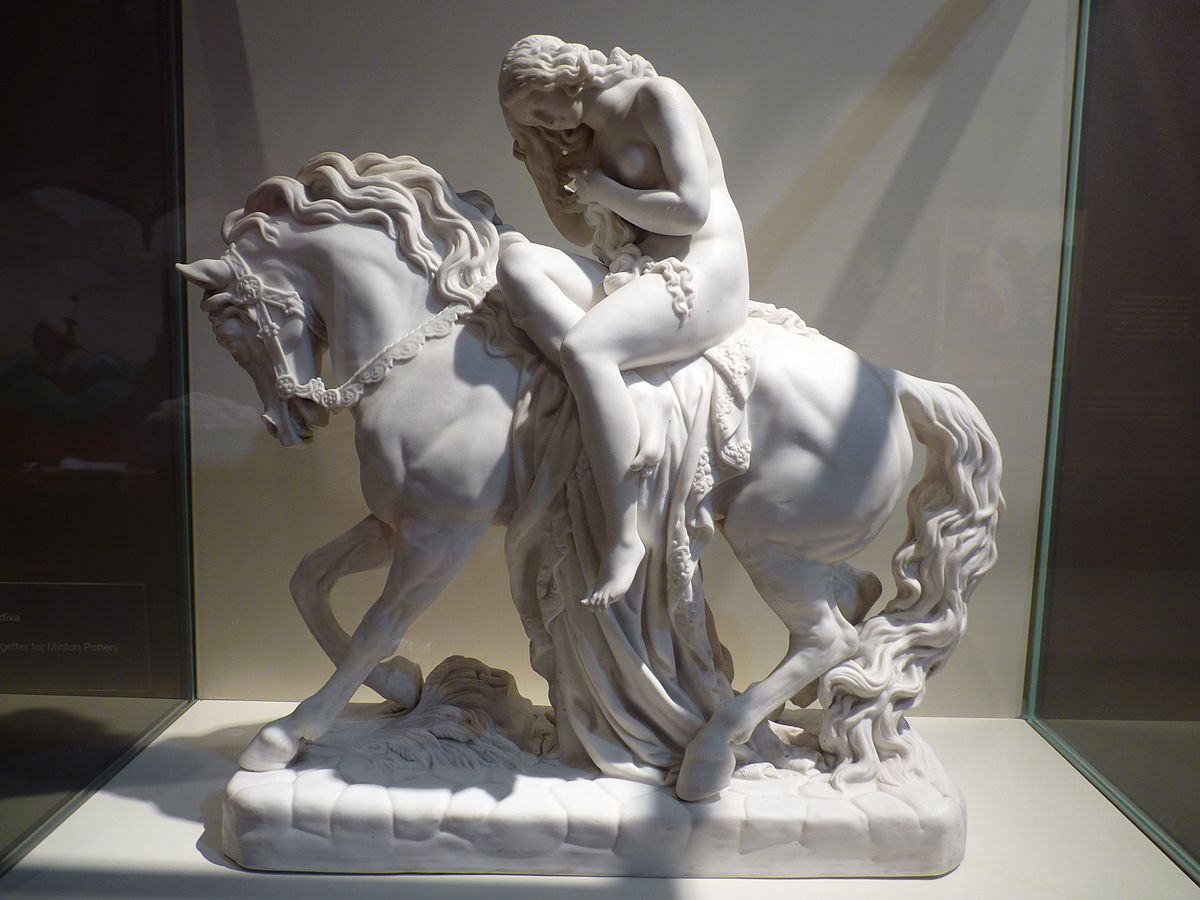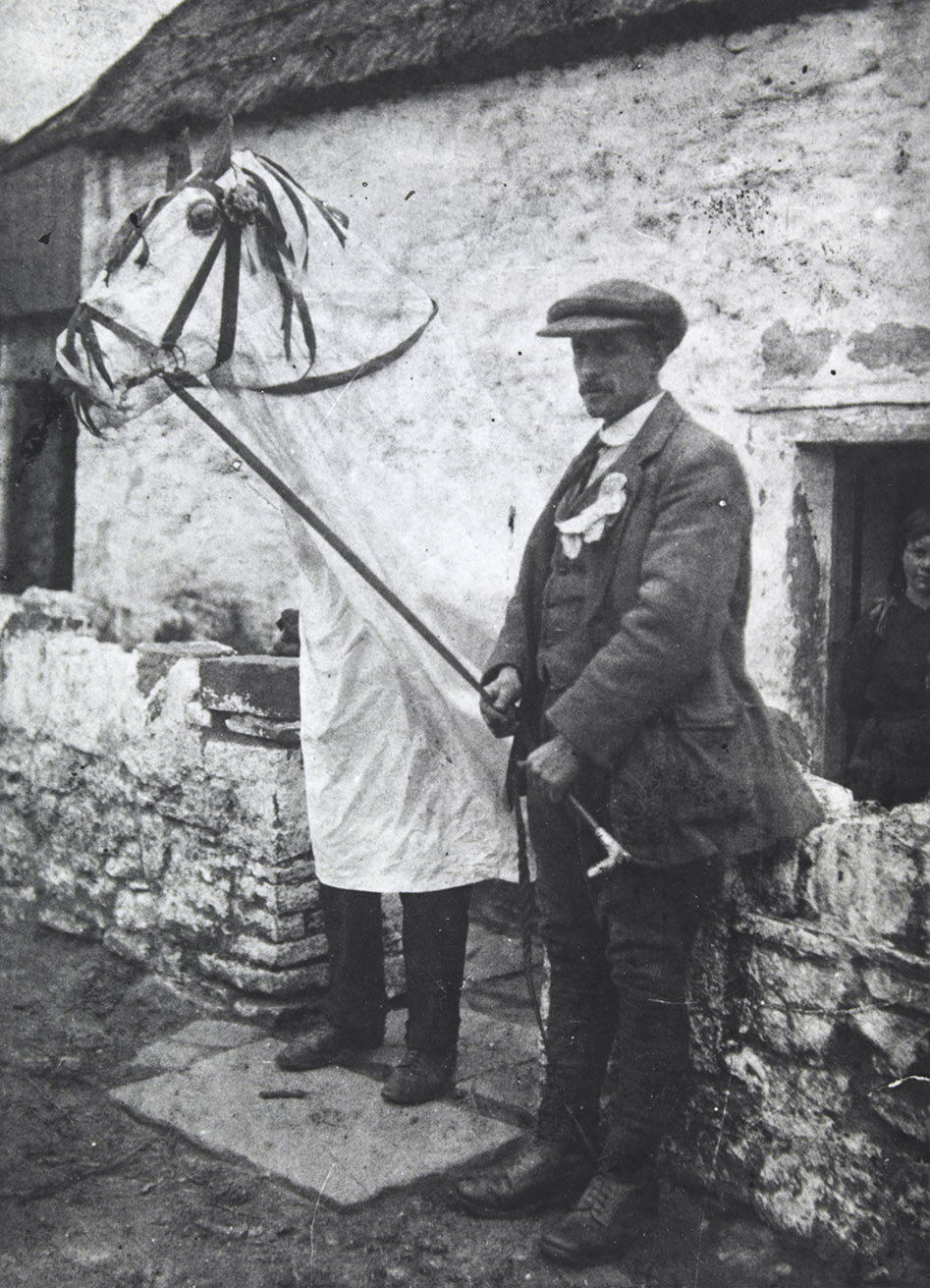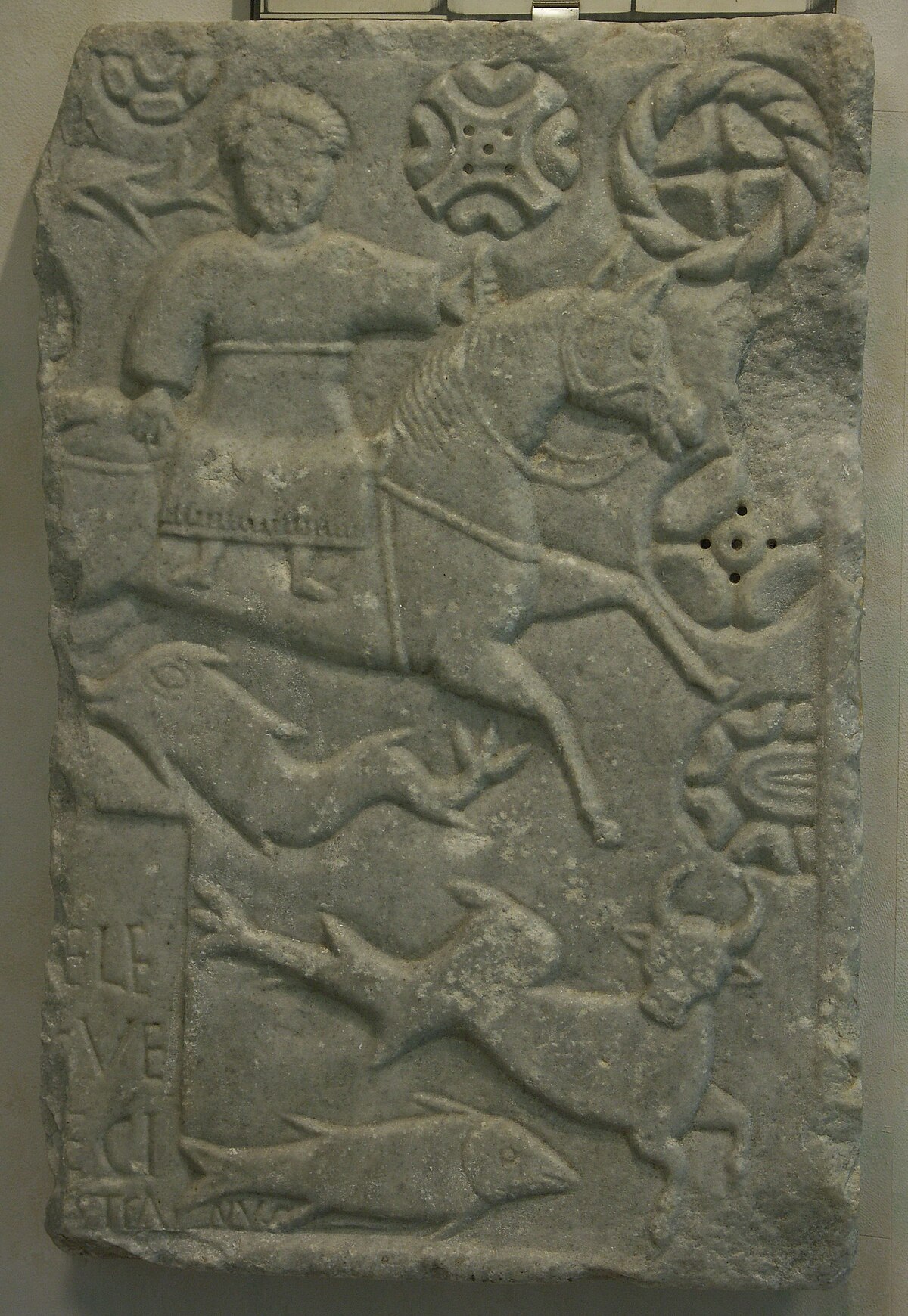
By Ibex73 – Own work, CC BY-SA 4.0, Link
One of the Goddesses that I work with is Lady Epona, a Celtic Goddess associated with Horses from Gaul. Epona means Great Goddess of Horses. She is often depicted carrying a sheaf of wheat, a cornucopia, accompanied by birds, often ravens, dogs and snakes. She is an otherworld Goddess connected to sexual love and fertility. In this essay I will explore some of the interesting connections, speculations, gnostic revelations and researches that have come my way in working with the Lady.
As I am sure you will be aware, Horses were a very important part in the Celtic world from antiquity to the modern day. Goddesses associated with horses are, as well as Epona, Rhiannon from the Welsh pantheon, and Macha, Etain Echraide and Medhbh from the Irish world. What I have to say here will be of interest to those working with these other deities as well.

By Frédéric Moreau et illustrations de Pilloy. Versement et modifications ː G.Garitan – Album Caranda, exemplaire de la B.M. de Reims., Public Domain, Link

By Claus Ableiter – Own work, CC BY-SA 3.0, Link
What’s in a word?
I will start by exploring the word Mare, the modern English word for a female horse, and we will look at some other words associated with horses.
The word mare, as well as meaning a female horse, has a meaning connected to the sea, and water. For instance the latin mare, meaning sea, cognate with the old english “meer” meaning a lake or pond, and the first part of words such as “mermaid” and “marine”. The Goddess “Mary”, is of the same ilk as well, one of her traditional titles being “star of the sea”.
The same word Mare, has also a meaning of mother, as in “ma”.
We may find the same root in the word marriage as well, and in the latin word for a husband, marito.
So, Mother Mare of the Sacred Union, Goddess of the Sea.
By Ecole d’Agassac (31) – Own work, CC BY-SA 3.0, Link
Here we may ponder on the legends of the old Irish ways in which the King was married to the Goddess of Sovereignty, in her form as a mare – the sacred marriage of priest to priestess, of political head to the personified Earth, the source of abundance and natural wealth.
Relationship between the Goddesses Epona and Brighid.
In my personal work with these Goddesses, they each embody a different energy and presence. Just as the Lady Epona has left her mark in our language, so has the Lady Brighid, also connected with the intimate union of lovers. The marriage represents the union of Bride and Groom. Although most people don’t have the slightest curiosity about these terms, they suggest to me the memory of the sacred union of God and Goddess as the template for human unions. “Bride” is of course a name for her Ladyship. It was not so long ago that the most treasured possession of little girls was there “Bride Doll”. Traditionally the Bride doll was made of sheaves of wheat and carried about on Brighid’s day. And as well as being the guy getting married, the groom is the person who looks after a horse, making sure it is fed, watered, brushed and cared for. So if the the Bride and Groom are getting married, (mare-ied), then it stands to reason that the person the Groom is to care for, is a Horse, or at least the sacred horse Goddess. When a Groom leads a horse, he takes her by the bridal. The bridal, the tether of the Goddess Brighid.
By Siannan – Own work, CC BY-SA 3.0, Link
So we have in the wedding ceremony and associated terminology an intriguing echo of the Celtic past in which the sacred union of God and Goddess, priest and priestess, played a pivotal part in ensuring blessing and abundance. To this day, the term for raising and breeding live stock for agriculture is known as animal husbandry, another intriguing echo of the sacred union that ensures abundance and prosperity.
We may also see the same root word, mare, in the word “May” for the month of may, traditionally the time for weddings, and of course the celebration of Beltaine, in which the sacred lovers come together to ensure the continued abundance of nature.
We note also that Brighid has another intimate connection with Horses, in that she is the patroness of Smiths. The main functions of Smiths were in shoeing horses, making ploughs and agricultural implements, and in making weapons. Here again we see the themes of horses, agriculture and battle reflected in an attribute of the Goddess Brighid.
Epona was the Great Mother of the British Celtic Kingdom of Brigantia, whose name resonates with that of the Goddess Brighid. She was said in some places to ride a Goose, and according to some is the original Mother Goose.
The Morrigan and Rhiannon
Macha, the Irish Goddess associated with Horses, is considered to be one of the three faces of the Morrigan. Here also, we have the same first syllable, “Mor”, or “mare”. Some consider her name to mean “Phantom Queen”, with the “Mor” part cognate with the mare in Nightmare. Epona is sometimes associated with Ravens, which also connects her to the Morrigan, a Goddess of Battle, sexuality and sovereignty. There is some suggestion that Epona may also have been a Goddess of Battle, being invoked with the words “Catona (of battle)” according to one contested interpretation of a latin votive inscription.This, as well as her care of Horses, may explain her popularity amongst the horse riding legionnaires of the Roman Army who adopted her. This would also align her to the Morrigan, and her less well known Great Mother Mare Aspect. Rhianon, the name of the Welsh Goddess who rides a white horse is said to mean Great Queen. There is some suggestion that she is also representative of the moon. The moon is not only the bringer of madness, but opens the gateway to the psychic realm, and has a dominion over the water, and growth, and symbolises the mother. Her association with horses does not end there however, for she was falsely accused of devouring her baby, and for penance had to carry travellers into the city on her back, in the manner of a horse. Rhiannon is also involved in a love tug a war between two suitors, associated with the upper world and the underworld.

By IsarJoey – You may select the license of your choice., CC BY-SA 4.0, Link
</p>Lady Godiva
In the legend of Lady Godiva, who rode naked through the town on a white horse in order to save the populace from oppressive taxation, the tax in question was a tax on horses. Some have seen the resonance with fertility rights, and May day. This is further amplified by the fact that the oppressor, was none other than Lady Godiva’s husband. So the King, was married to the Horse Goddess, who rode naked, and cared for the people. Not surprisingly, Epona is sometimes depicted as a naked woman lying across the back of a horse.
Incidentally, the name Godiva, means Gift of God, or as we might better understand it, Gift of the Goddess. In one account, “Peeping Tom” who looked upon her nakedness, was the Lady’s Groom. And here we may have another echo of the sacred union between Bride and Groom, as of course, the Groom being in intimate connection with her Ladyship, may well look upon her.

By Cmglee – Own work, CC BY-SA 3.0, Link
Welsh and Irish Folklore
Another resonance of the sacred marriage which brings fertility and abundance to the Earth, can be found in the Welsh folk tales of the Fairy Bride. The Fairy Bride has her home in a lake, and a farmer falls in love with her. He courts her, and they get married, she bringing her other worldly herds with her from the lake, which make the farmer very wealthy due to their health and fecundity. However there is a prohibition which he must observe. Sometimes, it is that he must never strike her, or perhaps never strike her with iron, or that he must never speak of her. After many years, the farmer foolishly, or due to some fatalistic circumstance, breaks this prohibition, and she returns to the lake with her herds, leaving him bereft, broken and impoverished. In one version of the tale, the farmer and his wife are out catching wild horses, and he throws her the bridal, which accidentally hits her in the face with the iron of its bit. Instantly she must return to the lake with her herds. In this story we have an association with the fairy wife (mare-age), water (mare), horses (mare), and fertility and abundance. Calamity strikes through not respecting the wishes of the Goddess, either deliberately or accidentally as in this case. This theme is repeated in the story of the Irish Goddess Macha, who appears at a farmer’s house after the death of his wife, and begins to keep his house, and then to sleep with him, ultimately becoming pregnant. She warns him never to speak of her. He foolishly becomes drunk, and boasts that his wife can run faster than any horse. The King causes her to be brought to him, and forces her to race his horses. She wins, giving birth to her twins on the finish line, and curses the men of Ulster to suffer pains as if of childbirth at the time of their greatest need. Macha, in legend, was the Goddess of Sovereignty of Ulster, mythologically married to the Kings, and at times, ruling in her own right, seeking vengeance on those who disrespected her, and using her sexuality not only to bring fertility and abundance, but to entrap those who disrespected her, and bring about her revenge.
In such stories the point is made very clear that the sexuality of Herself does not belong to any man, but is her own, and woe betide any man who thinks other wise.
The Mari Lwyd is a custom in some parts of Wales, in which a mare’s skull is placed upon a stick, and used in a wassailing festival, in which reveller’s compete in verses for the privilege of entering a house and drinking beer. It is variously said to mean “Grey Mary” or “Grey Mare”. As I have been saying here, it could quite easily mean both and in meaning both, have but one meaning, a remembrance of the the Great Mother Goddess associated with Horses and the Sea.

By Thomas Christopher Evans (Cadrawd) – National Library of Wales Photo Album 929 A, Public Domain, Link
The White Horse of the Fairy Queen
Ride a cock-horse to Banbury Cross,
To see a fine lady upon a white horse;
Rings on her fingers and bells on her toes,
And she shall have music wherever she goes.
Here we have a resonance of the association of the Fairy Folk with white horses, and music, especially bells. A cock horse could be an uncastrated animal, or it could mean a hobby horse. Note that two horses are mentioned. The cock-horse which is part of the injunction to the listeners, and the the white horse upon which the fine lady rides. When I was growing up as a lad of Irish Catholic extraction, a game my mother taught us to pass time on tedious car trips was that we had to cross our fingers if ever we saw a white horse. They could only be uncrossed if we saw a dog. I believe this is a vestige of an old belief that the Fairy Queen, riding a white horse, may represent a danger by stealing away children.
The classical connection.
The winged white horse, pegasus, was said to be born of water. A sacred well was said to have formed from his hoof mark, the spring called Hippocrene, which rose on Mount Helicon, the home of the Muses. Robert Graves supposes that the well was originally struck by the “moon shaped hoof of Leucippe (‘White Mare’), the Mare-headed mother herself…” Graves also states that Demeter was worshipped under the name of Epona, or the three Eponae. The Goddess Demeter was also sometimes represented as riding a horse. And as the horse was the puller of the plough which was essential in tilling the earth and providing the harvest, this should not be surprising.

By Stefan Kühn on de.wikipedia – Abbildung aus Meyers Konversationslexikon von 1888
Originally from de.wikipedia; description page is (was) here
19:24, 4. Aug 2003 Stefan Kühn 355 x 487 (38696 Byte) (Abbildung aus Meyers Konversionlexikon 1888 – Demeter (Relief aus Pompeji)), Public Domain, Link
Epona’s Singing birds.
Epona is to me the Goddess of the happy other world, whose birds bring ease to the souls of those who have suffered through war and trauma. See the entertaining of the head in the Mabinogian, where Bran’s men linger in the other world on Rhiannon’s Island, listening to the song of her birds and feasting until they forget their sorrows and are ready to return to the world.
In Conclusion
Our Lady Epona appears to represent an ancestral and ancient Goddess, Mother of the people, associated with the Sea, the Moon, and horses, and accompanied by dogs, snakes, doves and ravens, and other worldly singing birds. She is fierce in defence of those She loves, and, like a mother protecting her young, will fight fiercely for a just cause. She, with her horn of plenty, is the source of all abundance and fertility, and the image that has come to me is of her wild steed racing through the country side on a moonlit night, with her hoofs striking the ground, so that wherever they strike fruits and flowers spring up. She is the embodiment of our Mother Earth, and is deeply sensual and passionately sexual, belonging only to herself, and ready to revenge herself on men who scorn or spurn her, or fail to properly appreciate her gifts. She participates in the sacred marriage of Beltaine, with the Lord of Light, and rules beside the Lord of Dark, as his lover and consort during the dark half of the year. She embodies the mysteries of sexuality and desire, and the deep potentialities of relationships that are both sexual and loving, but embodies independence and belongs to no man. She is the bearer of the mysteries, depicted often with a head of wheat, resonating with the Eleussinian Mysteries, and She leads the Fare Folk from out of the Hollow Hills or the mountain lakes on holy nights.


